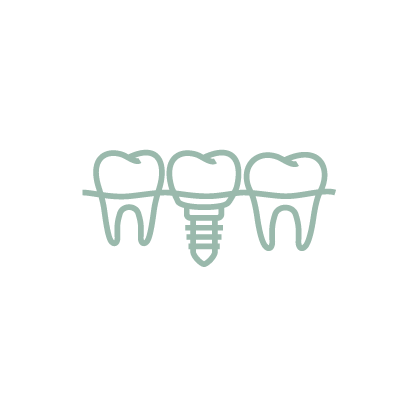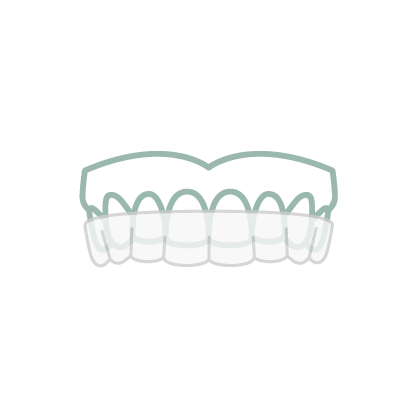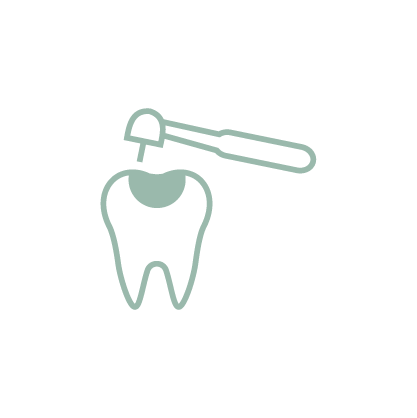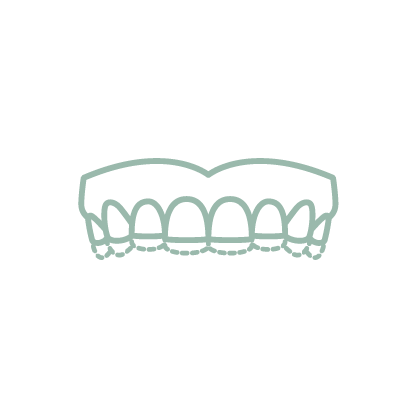Gummy smile correction
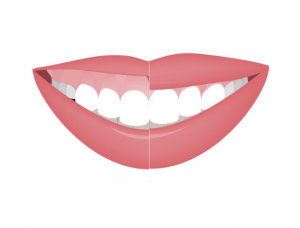
What is gummy smile?
An attractive smile is about how the smile is in harmony with the entire face. In an ideal smile, the upper lip sits just above the gum line of the teeth. It is usually around 0 – 2 mm. above the teeth.
A “gummy smile” exposes a larger amount of gum tissue (more than 2 mm.). That smile creates visual disproportion of the face. However, gummy smiles are common especially in asian. This condition affects around 15 – 25% of the population with more in younger women from 15 – 35 years old are being affected more than the rest.
What is the cause for gummy smile?
There are 3 common causes for gummy smile
1. Excessive gum (gingiva) covering teeth
Excessive gum covering the teeth is the most common cause of gummy smile. Normal size teeth but it looks short because they are partially hidden by the extra gum or gingiva. When the excessive gingiva is removed, the proportion of teeth will be normal and the gingival display will be reduced.
2. Upper lip move higher than normal
The upper lip comprises of several muscles. If high muscle strength is causing the lip to move up higher than normal, it will show excessive gum. Even though, the teeth and gum are proportion but the lip is moving up too far.
3. Upper jaw bone is longer than normal
The ideal proportions of the face are 1/3 for the upper face (forehead=hair line to eyebrow), 1/3 for the mid face (eyebrow to base of nose), and 1/3 for the lower face (base of nose to chin).
In these cases, patients have more growth in the maxilla than the rest of the face: The technical term is vertical maxillary excess. It results in more bone and gum behind the lip. Even though, the teeth, gum, and lip is normal, but it still shows excessive gum due to the overgrowth of maxilla.
What are gummy smile correction procedures?
1. Digital esthetic crown lengthening
Esthetic crown lengthening involves removing a portion of the gingival tissue (gingivectomy) and/or bone (crown lengthening) around teeth and placing the new gum line into a higher position. When the amount of gum removal is mild, gingivectomy may be enough. However, when the amount of gum removal is moderate to high, crown lengthening (gingiva and bone removal) will be needed. At Global Dental Complex(link), we use digital smile design(link) to help decide how much gingiva to be removed. With this technology, patients can see the expected result before the actual surgery begins. It will help you to decide how much gingival display you wants and transfer it to 3D printed surgical guide. So, the surgeon can placed the gum line where you want it to be. This procedure called digital esthetic crown lengthening, only at Global Dental Complex.
For most cases, the healing is generally around 1-3 days of mild swelling and tenderness. The full results are generally about 1 week after the procedure for gingivectomy. For more complex gummy smile correction with crown lengthening, the healing time can be around 4-6 weeks. Some cases, it can be combined with veneers(link) for ultimate esthetics concerns.
2. Botox
Botox helps correct gummy smile by reducing muscle activity of your upper lip. By injecting small units of botox in the upper lip muscles, it reduces how high your upper lip moves when you smile.
The botox injection result will be noticeable around 4-7 days, and it can last only 4-6 months. However, Botox can be repeated as needed once the effects is gone.
The Botox treatment is reversible. It allows a patient to test how their smile looks before deciding if they want to have surgery done. However, It can also be the biggest disadvantage because you have to get botox every 4-6 months which can be costly over the period of a lifetime.
3. Upper lip repositioning
The outside part of the lip is not actually lowered or even affected. The procedure for gummy smile correction by lowering upper lip is making two incisions at the gum line under the lip. A small band of gingival tissue is removed and the gingival tissue is sutured to a lower position. As the result, when the patient smiles the lip will not move as high as before in full smile.
There are no changes to the lip or face other than reducing the height of the smile. The healing for upper lip repositioning for gummy smile correction is around 2 weeks. It may causes bruising that resolves within the first week. The key for success is the patient must limit the movement for 4 weeks while its healing. It allows the smile to heal proper where the surgeon positioned it. The final results for upper lip repositioning surgery are observed at 4 weeks up to about 6 months after surgery.
.
4. Orthodontics or clear aligner
Sometimes, it is possible to correct a gummy smile by orthodontics. As the teeth move up, the gum line will also follow. In some cases, orthodontics is an initial step prior to other treatment.
5. Jaw surgery or orthognatic surgery
The final treatment for gummy smile correction is known as orthognathic surgery(link). Orthognathic surgery is required when there is a severe downward growth of the maxilla. The surgery is to move the upper jaw to a higher position. It is normally done together with orthodontics treatment.
Which treatment do I need for gummy smile correction?
1) Excessive gum (gingiva) covering teeth: Gingivectomy or digital esthetics crown lengthening are the treatments most commonly done to correct this problem that make the teeth look short.
2) Upper lip move higher than normal: Upper lip repositioning surgery is permanent correction or Botox for temporary treatment.
3) Upper jaw bone is longer than normal: Orthodontics treatment with orthognathic surgery is a treatment of choice to correct vertical maxillary excess.
For inquiries regarding gummy smile correction, or to make an appointment, contact Global Dental Complex today.

